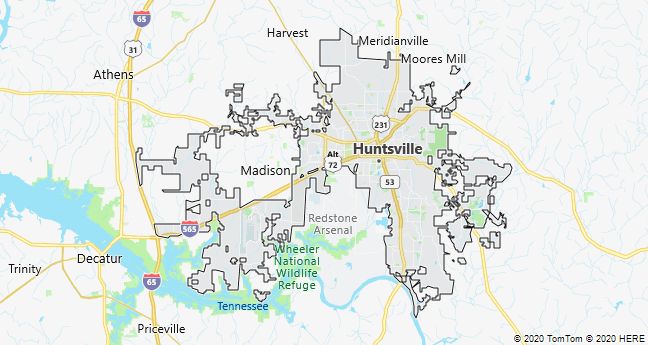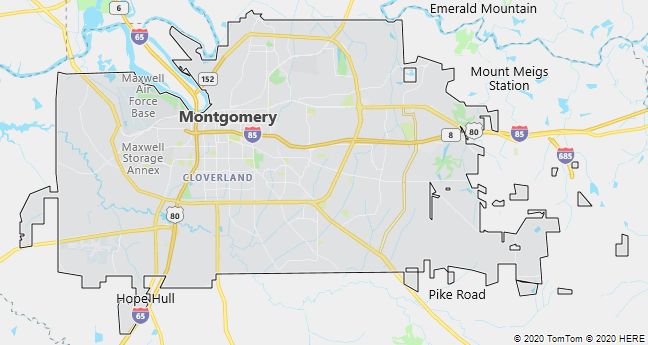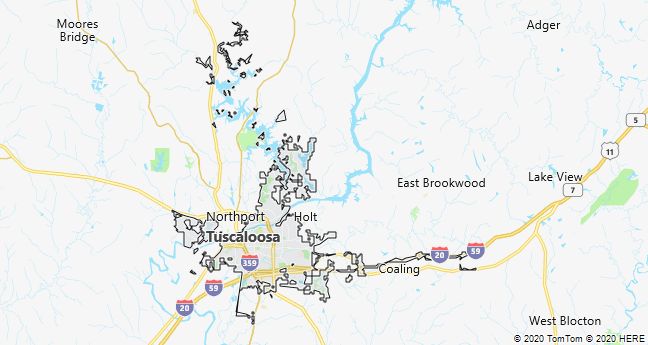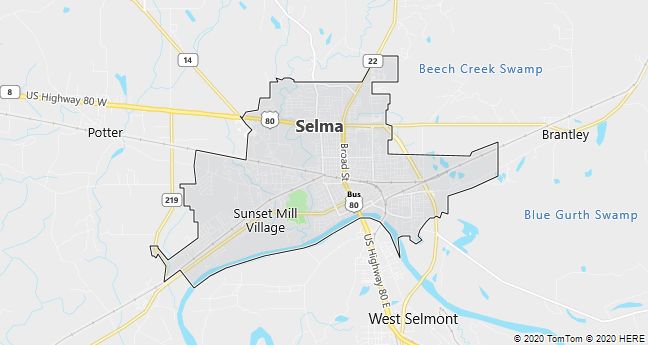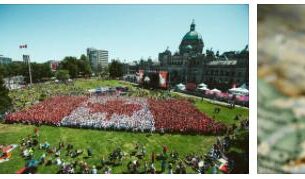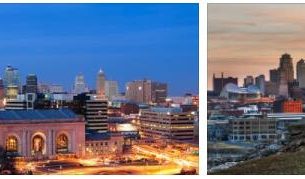Alabama, a state in the southeastern United States, is home to several major cities that contribute to its cultural and economic landscape. Birmingham, the largest city, stands as a hub for industry and commerce, known for its historical significance in the Civil Rights Movement. Montgomery, the state capital, holds a rich history as well, with landmarks like the Rosa Parks Museum honoring its role in civil rights history. According to alabamaswitcher, Huntsville, dubbed the “Rocket City,” is renowned for its aerospace and technology sectors, hosting NASA’s Marshall Space Flight Center and numerous defense contractors. Mobile, situated along the Gulf Coast, boasts a vibrant port and a blend of cultures, evident in its Mardi Gras celebrations and historic architecture. These cities, along with others like Tuscaloosa, Auburn, and Hoover, collectively showcase Alabama’s diverse character and contributions to the region.
Birmingham
Birmingham (Alabama), largest city in Alabama, USA; 212,200 residents, of which 73% are black (2010). Nicknamed “Pittsburgh of the South”, Birmingham was until the 1970’s the most important steel producer in the Southern States, on the basis of nearby raw material deposits in the southern Appalachians. The plants and most mines have since been closed, while other industries, especially in the pharmaceuticals and electronics, have grown in importance. At the same time, the serious air pollution has almost disappeared. Birmingham became world famous for the blacks’ civil rights demonstrations in the 1960’s. 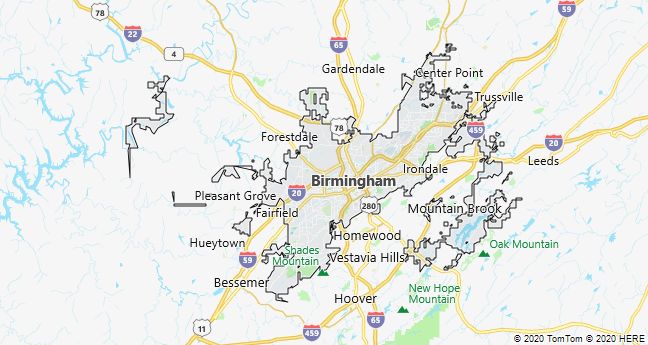
Huntsville
Huntsville, a town near the Tennessee River in northern Alabama, USA; 180,100 residents (2010). The city’s rapid growth after World War II is due to the construction of the military complex Redstone Arsenal with the space center Marshall Space Flight Center, which under the leadership of Wernher von Braun was behind the manufacture of America’s first satellites in the 1950’s and 1960’s. Here is also the well-visited Alabama Space and Rocket Center Museum.
Mobile
Mobile, a port city on the Gulf of Mexico in Alabama, USA; 195,100 residents (2010), 591,600 in the metropolitan area. Mobile is one of the Gulf Coast’s most important port cities with large shipments of forest and agricultural products. From 1711 to 2020, the city was the capital of Louisiana, France, and is home to the annual Mardi Gras festival, also known as New Orleans.
In 1864, Mobile Bay was the scene of a naval battle that gave an important victory to the Northern Fleet under the leadership of David Farragut.
Montgomery
Montgomery, capital of the state of Alabama, USA; 205,800 residents, of which approximately 57% black (2010). The city is located on the navigable Alabama River, which is used for shipping agricultural products, chemicals and wood. The city contains Alabama State University and Maxwell Air Force Base.
Montgomery was in 1861 the capital of the Confederate States of America. In the 1950’s, Martin Luther King had his first priestly vocation here, and the city became the center of the Civil Rights Movement.
Tuscaloosa
Tuscaloosa, a town in western Alabama, USA, on the Black Warrior River; 90,500 residents (2010). The city served as the state capital 1826-46 and is known for University of Alabama (1818). In Moundville Archeological Park (26 km to the south) are well-preserved remains of a pre-Columbian town with up to 18 m high “earth pyramids” (mounds).
Selma
Selma, a town on the Alabama River in the state of Alabama in the southeastern United States; 20,800 residents (2010). The city, the center of an agricultural area populated by blacks, is known for the Montgomery Civil Rights March in March 1965, when up to 25,000 participants led by Martin Luther King demonstrated for equal access to the right to vote. The march, which followed two previous attempts, both of which were halted after attacks by police forces, was supported along the way by Harry Belafonte, Joan Baez, Sammy Davis Jr. and other prominent artists. Later that year, Congress passed the Voting Rights Act, which guaranteed black Americans’ suffrage.
Browns Ferry
Browns Ferry, one of the world’s largest nuclear power plants (power: 3300 MW) on the Tennessee River in Alabama, USA. Inaugurated in 1973 as part of the large Tennessee Valley Authority complex. The plant was closed for 18 months after a fire near caused a disaster in 1975.
